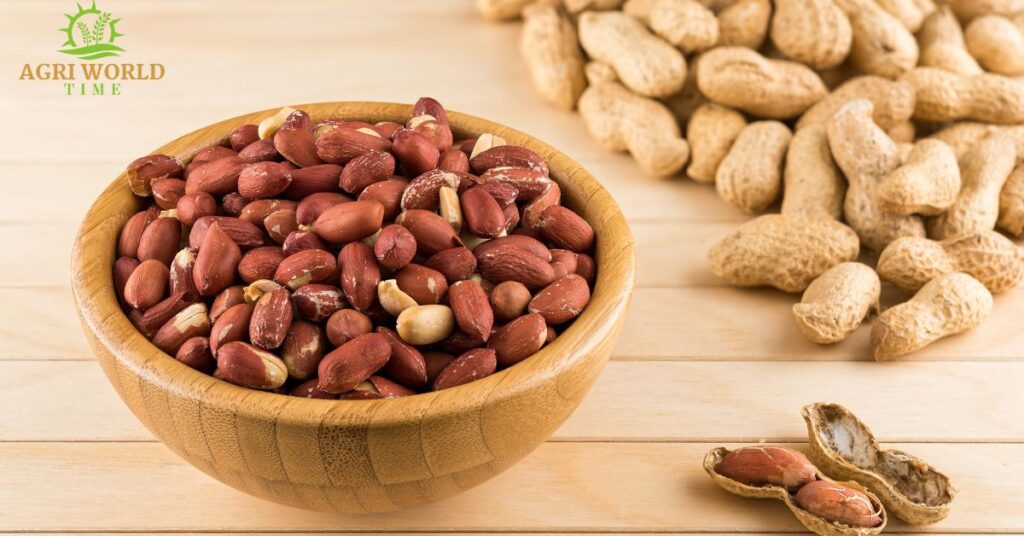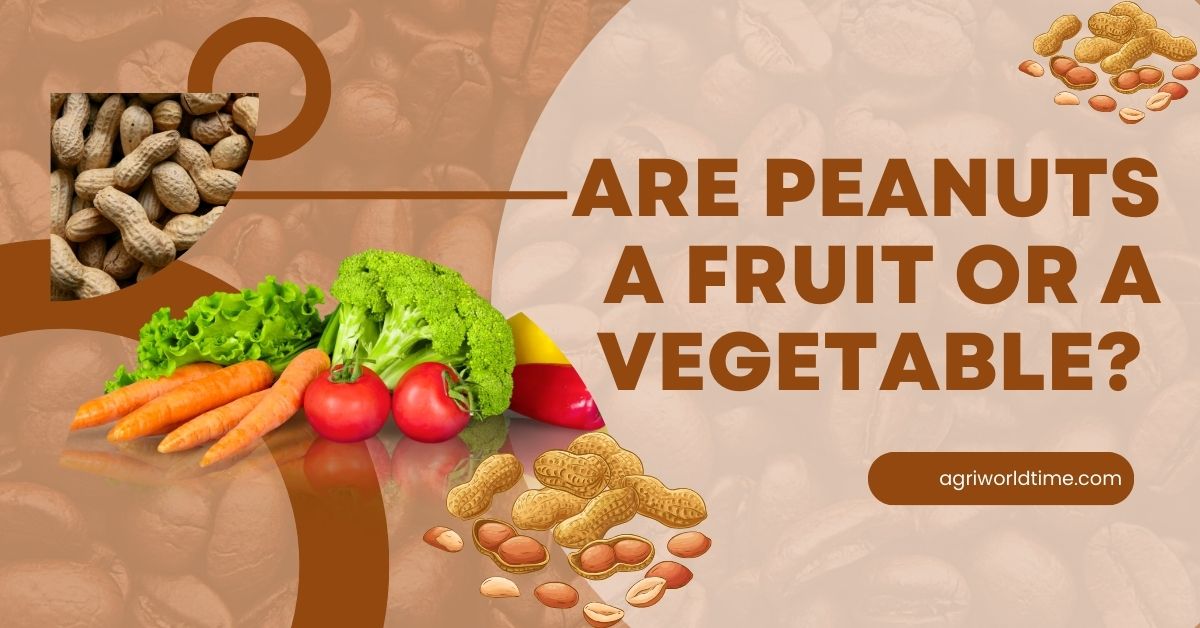The classification of peanuts has puzzled many for generations. Are they fruits or vegetables? It’s a debate that has sparked curiosity among food enthusiasts and botanists alike. While they may seem like nuts, the truth about peanuts lies hidden beneath their shells. In this article, we’ll unravel the mystery behind peanuts and explore whether they should be considered fruits or vegetables.
Understanding the Peanut Plant
To determine whether peanuts are fruits or vegetables, we first need to understand the peanut plant itself. Peanuts (Arachis hypogaea) are members of the legume family, which includes beans, lentils, and peas. Legumes are known for their unique way of growing, as they can fix nitrogen in the soil through a symbiotic relationship with certain bacteria.
Peanut plants begin their life cycle as seeds. These seeds are planted in the ground and grow into a small, bushy plant with green leaves. As the plant matures, it produces bright yellow flowers. These flowers are self-pollinating, meaning they can fertilize themselves without the need for external pollinators like bees or butterflies. After pollination, a stalk called a “peg” forms and pushes into the ground. This peg elongates and forms a structure known as a “peanut pod,” which houses the developing peanuts.

History of peanuts:
Peanuts have a long history dating back to ancient Peru, where the Incas cultivated wild peanuts for religious ceremonies. The modern era of peanut popularity began during the American Civil War in the 1860s, with George Washington Carver’s innovations.
Peanut butter was created in the 1890s as a protein substitute. In the early 1900s, roasted peanuts in oil were packaged as “Planters” peanuts.
In 1928, peanut butter commercialization started, with Rosenfield J licensing his invention to the Pond Company, makers of Peter Pan peanut butter. This marked the beginning of peanut butter’s global popularity, spreading to Europe and Asia. Today, peanuts and peanut products are enjoyed worldwide.
So, are Peanuts Fruits?
Botanically speaking, a fruit is the mature ovary of a flowering plant, usually containing seeds. By this definition, peanuts are indeed fruits. The peanut pod, which develops from the peg, contains the seeds, or peanuts, within it. Each pod typically contains two to three peanuts. When the peanut pod matures and dries, it splits open to reveal the seeds (peanuts) inside.
This aligns with the botanical classification of peanuts as fruits, as they meet the criteria of being the mature ovary of a flowering plant with seeds inside. However, this is where the confusion begins, as peanuts are often considered nuts in culinary contexts.
But What About the “Nut” Label?
Despite being botanically classified as fruits, peanuts are widely considered and referred to as nuts in culinary terms. This discrepancy between botanical classification and culinary terminology can be attributed to the way peanuts are used and their flavor profile.
Peanuts share many characteristics with tree nuts, such as almonds and cashews. They have a similar nutty flavor and a crunchy texture when roasted. This similarity in taste and texture has led to their common classification as nuts in the culinary world. People often use the term “peanut” to describe the legume as well as the culinary nut derived from it.
To further complicate matters, the peanut’s close relative, the cashew, is also technically a seed (it grows on the cashew apple, another fruit). Still, it’s commonly referred to as a nut. This inconsistency in culinary labeling emphasizes the complex nature of food classification.
So, Are Peanuts Vegetables?
While peanuts are botanically fruits and culinarily nuts, there’s another perspective to consider: vegetables. This perspective stems from how peanuts are grown and cultivated.
Peanut plants are usually grown for their seeds (peanuts), but their entire plant is utilized. Farmers often use the leaves and stems of the peanut plant as livestock feed. The green, leafy parts of the plant are rich in protein and other nutrients, making them a valuable source of fodder.
In this sense, you could argue that peanuts are vegetables because both the seeds (fruits) and the plant’s vegetative parts (leaves and stems) are harvested and consumed. However, this perspective is more about the practical usage of the plant rather than its botanical classification.
Cultural Perspectives on Peanuts
The classification of peanuts varies from culture to culture. In some regions, peanuts are considered nuts, while in others, they are seen as legumes or even vegetables. This cultural variation reflects the diversity of human culinary traditions and how people perceive and use food items.
For example, in parts of Asia, peanuts are often used in savory dishes and are considered more as legumes than nuts. In contrast, in Western countries, peanuts are frequently associated with sweet treats like peanut butter and are considered nuts.
Health and Nutritional Considerations
From a nutritional standpoint, peanuts share similarities with both nuts and legumes. Peanuts are cholesterol-free and rich in protein. They are an excellent source of plant-based protein, healthy fats, vitamins, and minerals. Peanuts are rich in monounsaturated and polyunsaturated fats, which are heart-healthy fats commonly found in nuts.
However, peanuts also contain antinutrients like phytic acid, which can reduce the absorption of certain minerals. This aspect aligns more with the characteristics of legumes than with nuts.
Conclusion:
In the end, the classification of peanuts as fruits, vegetables, or nuts depends on your perspective. From a botanical standpoint, they are fruits because they meet the criteria of being the mature ovary of a flowering plant with seeds inside. However, in culinary terms, they are often referred to as nuts due to their flavor and texture despite their true botanical identity.
The confusion surrounding peanuts highlights the complexity of food classification and the cultural and culinary factors that influence how we perceive and use different foods. Regardless of how we classify them, peanuts remain a versatile and nutritious food enjoyed in various forms and cuisines around the world. Whether you think of them as fruits, nuts, or vegetables, there’s no denying that peanuts hold a special place in our culinary repertoire.
FAQs
1. Are peanuts actually nuts?
No, peanuts are not nuts; they are legumes. True nuts, like almonds and cashews, are different from peanuts both botanically and in terms of their growth and characteristics.
2. Are there different types of peanuts?
Yes, there are several varieties of peanuts, including Virginia, Spanish, Valencia, and Runner. Each type has its unique taste and characteristics, making them suitable for various culinary applications.
3. Are peanuts healthy?
Peanuts are indeed a nutritious snack. They are a good source of protein, healthy fats, vitamins, and minerals. However, they should be consumed in moderation due to their calorie content.
4. Can people with nut allergies eat peanuts?
People with nut allergies should be cautious when consuming peanuts because they belong to the legume family. Cross-contamination can occur, so it’s essential to consult a healthcare professional if you have allergies.
5. Are there any peanut-related traditions around the world?
Yes, many cultures have unique traditions and dishes that incorporate peanuts. For example, in some Asian cuisines, peanuts are used in satay sauce, while in the United States, peanut butter is a popular spread.

